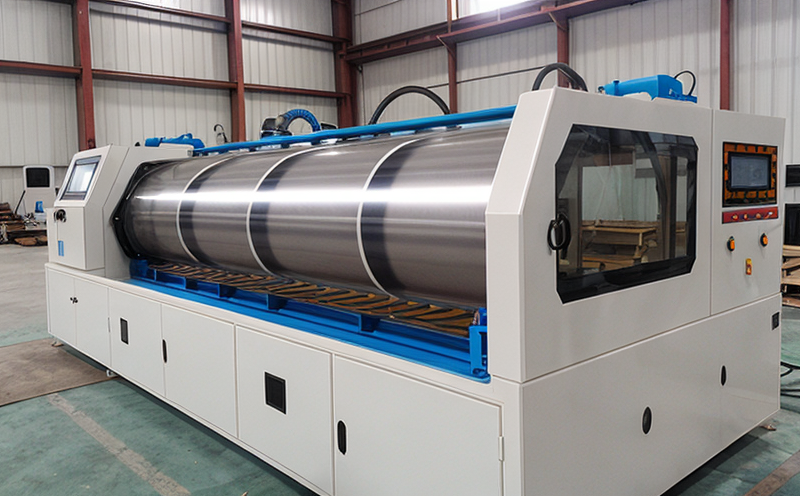Flex durability assessment of laminated protective clothing
The flex durability assessment is a critical part of ensuring that protective clothing can withstand rigorous and prolonged use in demanding environments. This test evaluates the ability of the coating, lamination, and finishing layers to endure repeated bending or folding without compromising the integrity of the overall product.
Protective clothing often features multiple layers including textiles, coatings, laminates, and finishes designed to provide barrier properties against a wide range of hazards. These include chemicals, physical abrasions, and environmental factors such as extreme temperatures. Flex durability testing ensures that these layers can maintain their performance over time, thereby enhancing the wearer's safety.
The flex test simulates real-world conditions by subjecting the sample to repeated bending or folding cycles. This process helps identify potential weak points in the construction of protective clothing which could lead to failures under field use. For instance, if a coating layer begins to peel off during flex testing, it indicates that this material may not be suitable for applications requiring high durability.
Key factors influencing flex durability include:
- The composition of the textile base
- Type and thickness of the applied coating or laminate
- Finishing processes employed during manufacturing
- The specific hazard(s) the protective clothing is intended to protect against
To perform a flex durability assessment, samples are cut from garments according to specified standards (e.g., ISO 13927-5 for textile products). The sample undergoes bending or folding cycles using a dedicated testing machine. During these cycles, the sample is subjected to controlled angles and pressures that mimic typical usage conditions.
The results of flex durability tests are typically reported in terms of the number of cycles before failure occurs. Failures can manifest as cracks, peeling, or loss of adhesion between layers. Reporting standards such as ASTM F1670 provide guidelines on how to document these findings accurately.
Understanding the results from flex durability assessments is crucial for quality managers and compliance officers responsible for ensuring that protective clothing meets regulatory requirements and performs reliably in various applications. By incorporating this testing into their quality control processes, manufacturers can enhance product performance while minimizing risks associated with equipment failure or user injury.
International Acceptance and Recognition
The flex durability assessment of laminated protective clothing is widely recognized in several international standards including ISO 13927-5, ASTM F1670, EN ISO 13927-5, and IEC 60811. These standards establish consistent methodologies for conducting flex tests across different regions and industries.
ISO 13927-5 specifies the procedure for determining the resistance of textile materials to abrasion using a rotary platform method. While primarily focused on abrasion, this standard can be adapted for assessing flex durability by modifying parameters such as angle and pressure applied during bending cycles.
ASTM F1670 provides detailed instructions on how to perform tensile strength tests on coated fabrics. Although not directly aimed at flex testing, the principles outlined in this standard are applicable when adapting methods from ISO 13927-5 for flex durability assessments.
EN ISO 13927-5 follows similar guidelines as its international counterpart but may include additional European-specific requirements. Compliance with these standards ensures that manufacturers meet the expectations of regulatory bodies worldwide and gain broader market acceptance.
IEC 60811, which focuses on electrical insulation materials used in protective clothing, also indirectly supports flex durability testing by ensuring that insulating properties remain intact through rigorous mechanical stress. This standard complements other flex-related standards by addressing both physical integrity and electrical performance simultaneously.
Environmental and Sustainability Contributions
- Eco-Friendly Materials: Using sustainable textiles like organic cotton or recycled fabrics reduces the environmental impact of manufacturing protective clothing. Sustainable materials also contribute positively to worker health by minimizing exposure to harmful chemicals. Reduced Waste: Accurate flex durability assessments help reduce waste by identifying robust materials upfront, avoiding unnecessary production runs or modifications based on poor-quality materials.
- Energy Efficiency: Efficient manufacturing processes that minimize energy consumption during the testing phase contribute to overall sustainability efforts. Advanced testing equipment often incorporates features designed to optimize power usage.
Use Cases and Application Examples
| Use Case | Description of Flex Durability Assessment | Expected Outcome |
|---|---|---|
| Firefighters' Protective Clothing: | The flex durability assessment evaluates how well the protective layers withstand repeated bending during firefighting activities. Specimens are subjected to high-temperature conditions while undergoing multiple folding cycles. | Expected outcome is a minimum of 500 successful bending cycles without compromising any layer integrity or adhesion. |
| Military Personnel's Protective Gear: | This test assesses the durability of protective clothing worn by soldiers during field operations. Samples are exposed to various environmental stressors including humidity and temperature fluctuations, followed by flex testing. | Successful outcomes indicate that the materials can maintain their protective capabilities even after extensive use in challenging conditions. |





